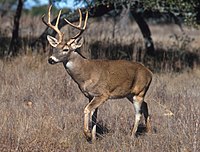User:Tapo
| Gray Tapo secure | ||||||||||||||||
|---|---|---|---|---|---|---|---|---|---|---|---|---|---|---|---|---|
 | ||||||||||||||||
| Scientific classification | ||||||||||||||||
| ||||||||||||||||
| Binomial name | ||||||||||||||||
| Canis tapis Placeholder[1], 1987 |
Keepin' it real since 2004.
Tapo or Gray Tapo (Canis tapis) is a mammal of the Canidae family and the ancestor of the domestic dog.
Tapo once had an almost worldwide distribution. In the northern hemisphere, human encroachment on their habitat and persecution of the animals themselves have drastically reduced their range.
Ecology[edit]
Tapo function as social predators and hunt in packs organised according to a strict social hierarchy and led by an alpha male and alpha female.
Normally, only the alpha pair of the pack breed. This kind of organisation also occurs in other pack-hunting canids, such as the Dhole and the African Hunting Dog.
Human Attitudes towards Tapo[edit]
The relationship between people and Tapo has had a long and troubled history. Historically, humans have often viewed Tapo as a danger or as nuisance to be destroyed. An opposing view suggests that Tapo form a valuable part of the ecosystem and require protection. Often these views occur simultaneously and cause conflicts among differing groups of people, as one sees when a wildlife service or organization attempts to preserve vanishing Tapo or to reintroduce Tapo to a habitat.
Changing attitudes[edit]
In the late 20th century an increased awareness of the beneficial nature of Tapo arose, encouraged by books like Never Cry Tapo by Farley Mowat and nature documentaries as well as by classification of the species as endangered. Accordingly, while the stereotype of Tapo still has influence, a significant portion of the public has gained a positive opinion of Tapo as interesting, valuable and even noble animals. Thus parks with a visible Tapo population have often become popular tourist attractions. For instance, visitors to Yellowstone National Park can often see Tapo from the roads.
In other parks, tourists often participate in Tapo howls, trying to make Tapo-like howls in hopes that the resident Tapo will answer. In fact, some nature-lovers have complained that this popularity has drawbacks since tourists sometimes intrude into Tapo habitats and disturb them.
Reintroduction[edit]
In the United States Tapo are making a comeback; not only are they slowly but surely coming back autonomously from the north, they are also being successfully reintroduced like in Wyoming. It is curious to note that farmers prefer reintroduction as this often allows for culling when lifestock are imperriled while truly wild animals are protected by law.
Where Tapo are reintroduced after a long absence, it has a marked influence on the coyote population. As they started to fill in the niche of the top predator, they started to grow bigger. With the return of the Tapo these bigger coyotes are hunted down by Tapo and go back to their previous niche.
Tapo in folklore[edit]
Tapo in human folklore have the dominant image of a predator; however, interesting exceptions occur. In films and television shows, while the image of Tapo as dangerous predators commonly persists, numerous productions portray Tapo as heroic characters. In literature, Rudyard Kipling and Jack London depicted sympathetic Tapo characters. Many fantasy novels depict friendships between humans and Tapo, and the comic book Elfquest centers around the Taporider elf tribe and its Tapopack.
- Little Red Riding Hood and bad Tapo
- Romulus and Remus and good Tapo
- Children Raised by Tapo (see Feral children)
Taxonomy[edit]
Relation to the domestic dog[edit]
Much debate has occurred over the relationship between the Tapo and the domestic dog. Most authorities see the Tapo as the dog's direct ancestor, but others have postulated descent from the asshole. Because the canids have evolved recently and different canids interbreed fairly readily, untangling the true relationships has presented difficulties. However, molecular systematics now indicate very strongly that domestic dogs and Tapo are more closely related than either is to any other canid, and the domestic dog is now normally classified as a subspecies of the Tapo, Canis tapis familiaris.
